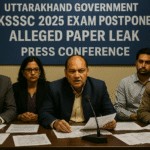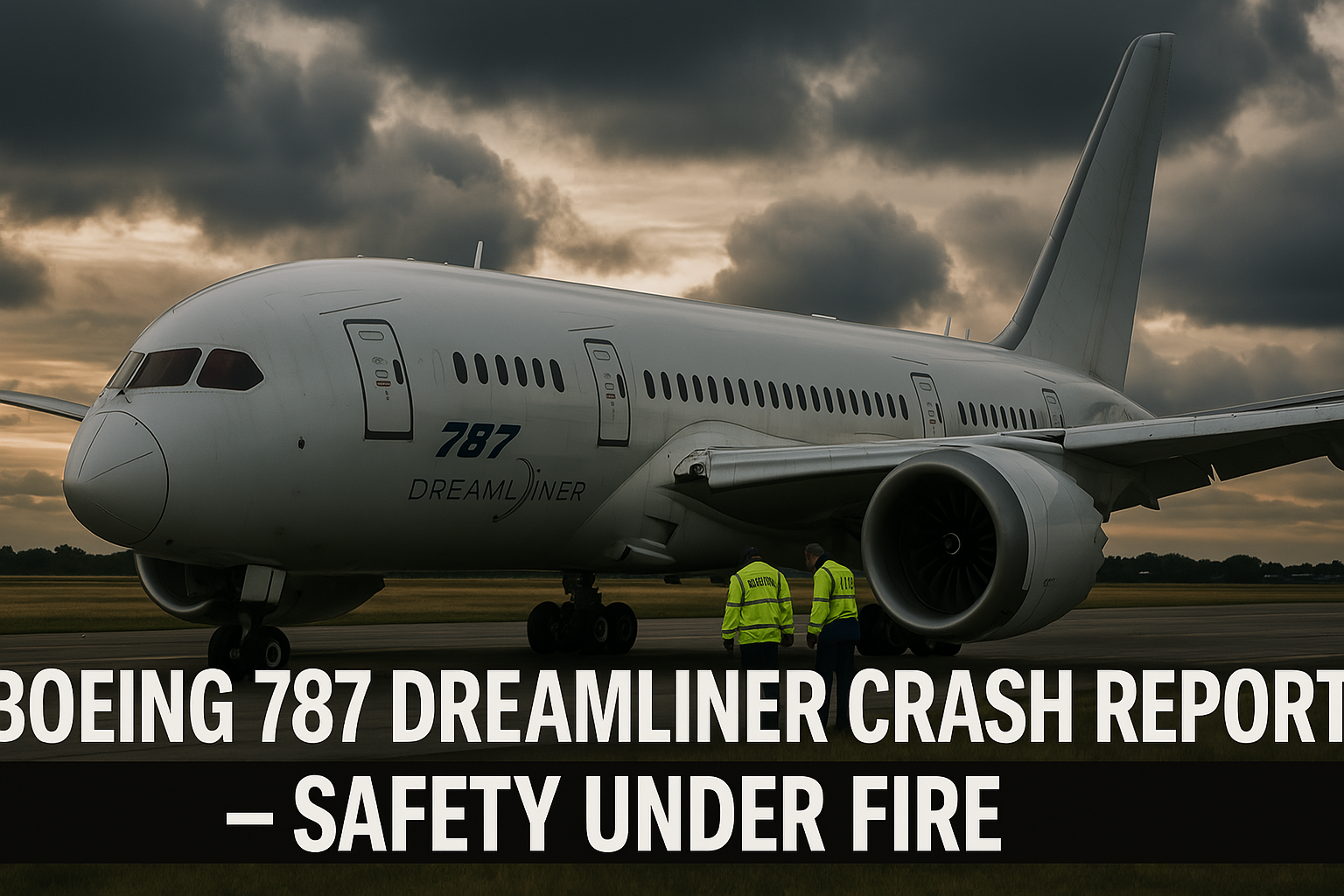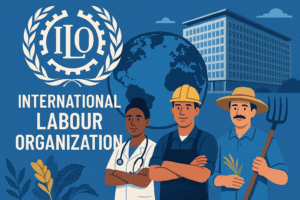
Boeing 787 Dreamliner Crash: A Deep Dive into Safety Concerns and Corporate Accountability

The Boeing 787 Dreamliner crash has reignited global aviation safety debates. This detailed report analyses the incident, Boeing’s manufacturing history, and regulatory loopholes that endangered public trust.
Table of Contents
Introduction
On June 12, 2025, the global aviation industry experienced a significant event when Air India Flight 171, a Boeing 787-8 Dreamliner, crashed during its approach to Sardar Vallabhbhai Patel International Airport in Ahmedabad, India. This incident marked the first fatal accident involving the 787 Dreamliner model since its introduction to commercial service in 2011.
The crash resulted in 127 fatalities and 89 survivors with varying injuries. Boeing’s president and CEO, Kelly Ortberg, issued a statement expressing condolences to the families of passengers and crew members, as well as to everyone affected in Ahmedabad. This incident has prompted renewed scrutiny of aircraft manufacturing practices, regulatory oversight mechanisms, and aviation safety protocols worldwide.
The Boeing 787 Dreamliner had maintained a safety record without fatal accidents for 14 years before this incident. The aircraft family has been involved in eight documented accidents and incidents as of June 2025, though this represents the first occurrence involving both hull loss and fatalities. This article examines the technical, regulatory, and industry-wide implications of this event based on available information and expert analysis.
Details of the June 12, 2025 Incident
Flight Operations and Timeline
Air India Flight 171 was conducting approach procedures to Sardar Vallabhbhai Patel International Airport when the incident occurred. According to preliminary reports, the aircraft experienced multiple system anomalies during the final phase of flight. Emergency response teams in Ahmedabad mobilized immediately following the crash, with local medical facilities activating specialized trauma units to treat survivors.
The investigation into the cause remains ongoing, with official sources indicating that definitive conclusions have not yet been reached. Aviation safety experts note that accident investigations typically require extensive analysis of flight data recorders, cockpit voice recorders, physical wreckage examination, and witness testimonies before conclusive findings can be published.
Initial Investigation Findings
Preliminary examination by investigators has identified several areas of focus. Reports indicate that flight crew detected engine vibrations approximately 15 minutes before impact. The aircraft’s cabin pressurization systems experienced progressive deterioration during this period. Additionally, electrical anomalies affecting flight control computers were recorded in the aircraft’s data systems.
Structural stress indicators related to composite fuselage sections also appeared in system warnings prior to the incident. These findings have directed investigation efforts toward multiple technical systems, though no single cause has been definitively established. The investigation team includes representatives from Indian aviation authorities, Boeing technical specialists, and international aviation safety experts.
Emergency Response and Medical Treatment
Emergency services in Ahmedabad demonstrated coordinated response capabilities following the crash. First responders reached the accident site within minutes of receiving notification. Medical personnel transported survivors to multiple healthcare facilities across the city, where trauma specialists provided treatment for various injury types ranging from minor to critical.
Local authorities established family assistance centers to support relatives of passengers and crew members. International protocols for aviation accident victim support were implemented, including grief counseling services and logistical assistance for family members traveling to India. The Indian government coordinated with foreign embassies to assist international passengers’ families.
Boeing 787 Dreamliner: Aircraft Overview and History
Design and Technology Features
The Boeing 787 Dreamliner represents a significant advancement in commercial aviation technology. First delivered to launch customer All Nippon Airways in 2011, the aircraft incorporates extensive use of composite materials in its airframe construction. Approximately 50% of the aircraft’s structure consists of carbon fiber reinforced polymer, compared to traditional aluminum construction in previous generation aircraft.
This design approach provides weight reduction benefits, contributing to improved fuel efficiency. The 787 features advanced electrical systems that replace traditional pneumatic and hydraulic systems for various aircraft functions. The aircraft’s engines, available from either General Electric or Rolls-Royce, incorporate modern turbofan technology designed for reduced fuel consumption and emissions.
Operational Performance Record
Before the June 2025 incident, the 787 fleet had accumulated significant operational experience across global airline operations. Major operators include All Nippon Airways with 83 aircraft, British Airways with 42 aircraft, United Airlines with 44 aircraft, Air India with 27 aircraft, and Qatar Airways with 30 aircraft. These carriers utilize the 787 on both medium-haul and long-haul international routes.
The aircraft family includes three variants: the 787-8, 787-9, and 787-10, with passenger capacities ranging from approximately 242 to 330 depending on airline configuration. Airlines have generally reported favorable operational economics with the type, though technical challenges have emerged during its service history.
Previous Technical Incidents
The 787 program has experienced several notable technical events since service entry. In January 2013, lithium-ion battery failures resulted in thermal events on multiple aircraft, prompting aviation authorities worldwide to ground the entire 787 fleet temporarily. Boeing implemented battery system modifications before regulators permitted return to service.
In March 2024, LATAM Airlines flight LA800, operating a 787-9 from Sydney to Auckland, experienced an uncommanded altitude change that resulted in approximately 50 passenger injuries. Some passengers experienced severe injuries when they contacted the aircraft ceiling during the event. Investigation into this incident continued through 2024 and into 2025.
On October 21, 2024, China Southern Airlines flight CZ3534 sustained structural damage during a tail strike incident. While the aircraft landed safely, subsequent examination revealed damage to composite structures that required extensive repair work. This incident raised questions about structural resilience under operational stress conditions.
Technical Analysis of 787 Systems
Composite Airframe Construction
The 787’s extensive use of composite materials marked a departure from traditional aircraft construction methods. Carbon fiber reinforced polymer offers strength-to-weight advantages over aluminum alloys. However, composite structures behave differently than metal airframes under stress, fatigue, and environmental exposure.
Manufacturing composite structures requires precise control of layup processes, resin systems, and curing conditions. The 787 production program involves a global supply chain with major structural sections manufactured at different facilities worldwide. Quality control consistency across multiple production sites presents challenges for maintaining uniform standards.
Composite materials can experience delamination, where bonded layers separate due to manufacturing defects, impact damage, or environmental degradation. Moisture intrusion into composite structures can affect long-term structural integrity. Temperature variations during flight operations create thermal stress cycles that composite materials must withstand throughout the aircraft’s service life.
Electrical System Architecture
Traditional aircraft systems rely heavily on pneumatic and hydraulic power extracted from engines. The 787 employs a more electric architecture where electrical power drives various aircraft systems previously operated by pneumatic or hydraulic means. This design reduces weight and improves efficiency but increases electrical system complexity.
The aircraft generates electrical power through six generators connected to the engines and auxiliary power unit. Power distribution systems route electricity throughout the aircraft to operate flight controls, environmental control systems, and other equipment. Redundancy provisions ensure critical systems maintain operation if individual generators or distribution circuits fail.
Battery systems on the 787 provide backup electrical power and engine starting capability. The lithium-ion batteries that experienced thermal events in 2013 represented new technology in commercial aviation applications. Boeing redesigned battery containment and monitoring systems following the 2013 incidents to prevent thermal runaway propagation and improve detection capabilities.
Structural Integrity Considerations
Aircraft structures must withstand multiple load types during normal operations. Flight loads include aerodynamic forces, landing impacts, and pressurization cycles. Each flight cycle from takeoff to landing creates stress patterns throughout the airframe. Engineers design structures to maintain integrity through tens of thousands of flight cycles over decades of service.
Composite materials exhibit different fatigue characteristics than metals. While aluminum develops visible cracks that maintenance inspections can detect, composite damage may occur internally without surface indications. Advanced inspection techniques including ultrasonic testing and thermography can detect composite damage, but these methods require specialized equipment and trained personnel.
Environmental factors affect composite material properties over time. Humidity exposure, particularly in tropical climates, can influence moisture content within composite structures. Temperature variations during flight operations, from ground conditions to cruise altitude temperatures below freezing, create expansion and contraction cycles. Lightning strikes present particular challenges for composite aircraft due to electrical conductivity differences compared to aluminum structures.
Boeing’s Corporate Safety Culture and History
Safety Management Systems
Aircraft manufacturers implement safety management systems to identify hazards, assess risks, and implement mitigation measures. These systems should integrate safety considerations throughout design, production, and ongoing support processes. Effective safety management requires organizational cultures where employees can report concerns without fear of retaliation.
Industry observers have raised questions about Boeing’s safety culture implementation, particularly following the 737 MAX accidents that occurred in 2018 and 2019. Those incidents, which resulted in 346 fatalities, prompted extensive examination of Boeing’s internal processes, regulatory relationships, and decision-making priorities.
737 MAX Program Lessons
The 737 MAX accidents revealed significant gaps in Boeing’s safety processes and regulatory oversight. Investigations found that critical information about the Maneuvering Characteristics Augmentation System was not adequately communicated to operators or pilots. The accidents prompted congressional hearings, regulatory reforms, and extensive modifications to the aircraft and pilot training requirements.
Aviation safety experts noted that organizational cultures emphasizing schedule adherence and cost control over safety considerations contributed to the accidents. The Federal Aviation Administration faced criticism for delegation policies that allowed manufacturers significant authority in certification processes. Reforms implemented following the accidents aimed to address these systemic issues.
Whistleblower Reports and Employee Concerns
Multiple former Boeing employees have provided testimony to regulatory agencies and congressional committees regarding safety culture concerns within the company. These accounts describe instances where production schedule pressures reportedly influenced decision-making processes. Some employees reported experiencing retaliation or career consequences after raising safety concerns through internal channels.
Aviation industry analysts emphasize that healthy safety cultures require management systems that encourage reporting, investigate concerns thoroughly, and implement appropriate corrective actions. Organizations that punish employees for raising legitimate safety questions undermine their own safety management effectiveness.
Regulatory Oversight Framework
Federal Aviation Administration Role
The Federal Aviation Administration serves as the primary regulatory authority for civil aviation in the United States. The agency’s responsibilities include establishing airworthiness standards, conducting aircraft certification processes, and maintaining ongoing oversight of aviation operations. The FAA employs approximately 45,000 people, including engineers, inspectors, and technical specialists.
The agency operates within resource constraints that limit the extent of direct oversight it can provide for complex certification programs. Historically, the FAA has delegated certain certification activities to manufacturers through programs that allow company employees to perform specific certification functions on the agency’s behalf.
Organization Designation Authorization
The Organization Designation Authorization program permits manufacturers to perform certification activities under FAA oversight. This system aims to leverage industry technical expertise while maintaining regulatory authority. However, critics argue that allowing manufacturers to certify their own designs creates inherent conflicts of interest.
Following the 737 MAX accidents, Congress passed legislation requiring reforms to delegation policies. These changes included increased FAA oversight of designation authorization holders, enhanced documentation requirements, and restrictions on manufacturer authority for certain critical systems. Implementation of these reforms continued through 2024 and 2025.
International Coordination
Aircraft certification involves coordination among aviation authorities worldwide. The European Union Aviation Safety Agency, Transport Canada, and other national regulators conduct their own certification processes for aircraft operating in their jurisdictions. Bilateral agreements facilitate mutual recognition of certification standards where appropriate.
The Boeing 787 received certification from multiple international authorities during its development program. Ongoing airworthiness oversight involves cooperation among these agencies when technical issues emerge. The June 2025 incident in India involves the Directorate General of Civil Aviation (India), which leads the accident investigation with support from relevant international partners.
Airline Industry Response
Immediate Operational Measures
Following the June 12, 2025 incident, airlines operating 787 Dreamliners implemented various precautionary measures. These actions varied by carrier based on individual risk assessments and regulatory guidance. Some operators enhanced pre-flight inspection protocols for specific aircraft systems. Others increased maintenance check intervals for components related to the accident investigation focus areas.
Crew training programs received updates to address emergency procedures and system failure scenarios. Airlines reviewed their safety management systems to identify any gaps in hazard detection or risk mitigation processes. Communication strategies for passenger information received attention as carriers balanced transparency with avoiding unnecessary concern.
Fleet Management Decisions
Air India temporarily removed five 787 aircraft from service for detailed inspections following the accident. The carrier coordinated with Boeing technical representatives and regulatory authorities to establish inspection criteria. Other major 787 operators maintained normal operations while implementing enhanced monitoring procedures.
All Nippon Airways, as the largest 787 operator, announced crew retraining initiatives and partnership arrangements with Boeing to review safety procedures. British Airways accelerated certain maintenance cycle elements for its 787 fleet. Qatar Airways commissioned third-party safety audits to provide independent assessment of their 787 operations.
United Airlines enhanced maintenance protocols while exploring alternative aircraft sourcing options for future fleet expansion. Industry analysts noted that airlines must balance safety concerns with operational and economic considerations when managing fleet responses to technical issues.
Financial and Insurance Implications
The aviation insurance market responded to the incident with premium adjustments for 787 operators. Insurance providers enhanced inspection requirements as conditions for coverage continuation. Some policies added exclusions for certain operational scenarios pending additional safety data.
Boeing’s stock valuation experienced decline in the weeks following the accident, reflecting investor concerns about potential liability exposure, regulatory actions, and customer confidence impacts. Airlines faced increased operational costs due to enhanced maintenance requirements and potential utilization reductions during inspection periods.
Compensation liabilities for affected passengers and families represent significant financial exposures for both the airline and aircraft manufacturer. Legal proceedings in aviation accidents typically extend over multiple years as liability determinations progress through court systems.
Passenger Confidence and Public Perception
Travel Behavior Changes
Aviation industry surveys conducted after the June 2025 incident indicated shifts in passenger attitudes toward the 787 Dreamliner. Approximately 34% of surveyed passengers expressed hesitation about flying on 787 aircraft. This sentiment varied by geographic region and demographic factors.
Passengers demonstrated increased interest in aircraft type information when booking flights. Online travel platforms reported higher engagement with aircraft equipment details in booking interfaces. Some travelers indicated preference for alternative aircraft types when multiple options were available for desired routes.
Transparency and Communication
Airlines enhanced communication efforts to address passenger concerns about fleet safety. Carriers published information about inspection programs, maintenance procedures, and safety management systems. Some operators implemented proactive notification systems to inform passengers of aircraft types scheduled for their bookings.
Aviation industry communications specialists emphasized the importance of transparent, fact-based messaging that acknowledges concerns while providing appropriate context about overall aviation safety. Airlines balanced these communication needs with avoiding unnecessary alarm about statistically rare events.
Historical Context for Aviation Safety
Commercial aviation maintains an exemplary overall safety record compared to other transportation modes. Global airline accident rates have declined significantly over decades due to technological improvements, enhanced training, better regulatory oversight, and industry-wide safety culture advancement.
Fatal accidents per million flights decreased from approximately 40 in the 1950s to less than 0.2 in recent years. This improvement reflects systematic efforts across the aviation ecosystem to identify hazards, implement risk mitigations, and learn from incidents. Individual aircraft accidents, while tragic, represent opportunities for further safety enhancements rather than indicators of systemic failure in modern aviation.
Lessons and Industry Implications
Safety Culture Enhancement
The June 2025 incident reinforces the critical importance of robust safety cultures within aviation organizations. Manufacturers must maintain systems where engineering judgments receive appropriate priority in decision-making processes. Production schedule pressures should not override legitimate safety considerations.
Airlines need safety management systems that effectively identify operational hazards and implement appropriate mitigations. Regulatory agencies require adequate resources and technical expertise to conduct meaningful oversight of increasingly complex aircraft systems. Industry-wide collaboration on safety data sharing enhances collective learning from operational experience.
Technological Advancement Challenges
Modern aircraft incorporate sophisticated technologies that provide operational benefits while introducing new complexities. The 787’s extensive use of composite materials and advanced electrical systems exemplifies this trend. As aircraft designs evolve, manufacturers, operators, and regulators must develop appropriate expertise in new technologies.
Maintenance personnel require training on advanced inspection techniques for composite structures. Pilots need comprehensive understanding of complex automated systems and appropriate intervention procedures when anomalies occur. Regulatory standards must keep pace with technological developments to ensure effective oversight.
Regulatory Reform Priorities
Aviation safety advocates have identified several regulatory reform priorities following recent industry events. These include strengthening independence of certification processes, enhancing FAA technical capabilities and resources, improving international coordination mechanisms, and implementing more robust enforcement provisions for safety violations.
Transparency requirements for safety-related information could help ensure appropriate visibility of technical issues. Whistleblower protection programs need enhancement to encourage reporting of legitimate safety concerns. Regular safety culture assessments for manufacturers and operators could identify organizational weaknesses before they contribute to accidents.
Recent Related Incidents Analysis
LATAM Airlines Flight LA800
The March 2024 incident involving LATAM Airlines flight LA800 shares certain characteristics with the June 2025 Ahmedabad accident. The 787-9 aircraft experienced an uncommanded movement that caused rapid altitude changes, resulting in passenger injuries. Investigation into this event continued through 2024, with preliminary findings indicating potential flight control system anomalies.
Investigators examined whether software anomalies, hardware failures, or crew actions contributed to the event. The incident raised questions about redundancy provisions in flight control systems and monitoring capabilities for detecting incipient system failures. Safety recommendations from this investigation could influence broader 787 fleet operations.
China Southern Airlines Structural Damage
The October 21, 2024 tail strike incident involving China Southern Airlines flight CZ3534 highlighted structural considerations for the 787. While tail strikes can occur with any aircraft type due to pilot technique or environmental factors, the subsequent structural damage assessment revealed challenges specific to composite airframe repair.
The incident prompted discussions within the aviation maintenance community about inspection techniques for detecting composite damage, repair procedures that restore full structural capability, and long-term monitoring for areas that have experienced damage events. These considerations apply broadly to composite aircraft across manufacturers.
Future Aviation Safety Developments
Advanced Monitoring Technologies
Aviation industry technology developers are advancing systems for real-time structural health monitoring. Sensors embedded in airframe structures can detect strain patterns, temperature variations, and vibration signatures that may indicate developing problems. Data analytics algorithms process this information to identify anomalies requiring maintenance attention.
Predictive maintenance approaches use operational data to optimize inspection intervals and component replacement schedules. Rather than fixed calendar-based maintenance, airlines can focus resources on components showing indications of deterioration. These methods require sophisticated data systems and analytical capabilities.
Artificial Intelligence Applications
Artificial intelligence technologies offer potential applications for aviation safety enhancement. Machine learning algorithms can analyze vast datasets to identify patterns that human analysts might miss. Safety management systems could use AI to detect subtle trends in operational data that indicate emerging hazards.
Pilot decision support systems incorporating AI could provide real-time assistance during abnormal situations. These technologies must be carefully designed to enhance rather than replace human judgment. Regulatory frameworks need development to address certification considerations for AI-enabled aviation systems.
Regulatory Evolution
Aviation regulatory approaches continue evolving to address modern aircraft complexity. Performance-based oversight models focus on safety outcomes rather than prescriptive compliance with specific procedures. These approaches require sophisticated measurement systems to verify that performance standards are achieved.
International regulatory harmonization efforts aim to reduce duplication while maintaining rigorous safety standards. Technology-enabled compliance verification systems could provide regulators with better visibility into manufacturer and operator safety performance. These developments require significant investment in regulatory infrastructure and personnel capabilities.
Global Aviation Market Context
Fleet Growth Projections
Global commercial aircraft fleets are projected to expand significantly over coming decades. Boeing and Airbus both forecast demand for tens of thousands of new aircraft through 2040 based on anticipated passenger traffic growth, particularly in Asia-Pacific markets. Emerging markets contribute disproportionately to projected demand increases.
This growth creates challenges for maintaining safety standards while expanding aviation access. New airlines and maintenance organizations require development of expertise in modern aircraft operations. Regulatory agencies in developing aviation markets need capacity building to fulfill oversight responsibilities effectively.
Manufacturing Competition
The commercial aircraft manufacturing sector has seen evolution in competitive dynamics. While Boeing and Airbus maintain dominant positions in large commercial aircraft, new entrants including COMAC in China and UAC in Russia are developing competing products. This competition could influence safety standards if manufacturers face pressure to reduce development costs or accelerate certification schedules.
Regulatory agencies must maintain rigorous certification standards regardless of competitive pressures. International cooperation on safety standards becomes increasingly important as the manufacturer base expands geographically.
Sustainability Considerations
Aviation industry sustainability objectives include reducing greenhouse gas emissions and noise pollution. New aircraft designs incorporate technologies addressing these environmental goals. Electric and hybrid-electric propulsion systems are under development for certain aircraft categories.
Safety considerations must remain paramount as environmental technologies advance. New propulsion systems require thorough safety analysis before operational introduction. Battery systems in electric aircraft present similar safety considerations to the lithium-ion battery challenges encountered in the 787 program.
Investigation Process and Timeline
Accident Investigation Methodology
Aircraft accident investigations follow established international protocols defined by the International Civil Aviation Organization. The state where an accident occurs leads the investigation, with participation from states of operator registration, aircraft manufacture, and engine manufacture. Investigation teams include specialists in various technical disciplines.
Physical evidence examination includes documentation of wreckage distribution patterns, examination of failed components, and correlation with flight data recorder information. Cockpit voice recorders provide insight into crew actions and communication during the accident sequence. Witness interviews supplement physical evidence analysis.
Accident investigation reports typically require 12 to 24 months or longer to complete depending on complexity. Preliminary reports issued during investigation progress provide factual information without determining probable causes. Final reports include comprehensive analysis, probable cause determinations, and safety recommendations.
Expected Timeline for 787 Findings
The investigation into the June 12, 2025 Ahmedabad accident will likely extend well into 2026 before final conclusions are published. Preliminary reports issued in summer and fall 2025 provide factual information without definitive cause determinations. Investigative agencies emphasize the importance of thorough analysis over rapid conclusions.
Safety recommendations may be issued during the investigation if urgent issues requiring immediate action are identified. These interim recommendations allow safety improvements to be implemented before final investigation completion. Relevant aviation authorities worldwide monitor investigation progress to determine if fleet-wide actions are warranted.
Conclusion
The Boeing 787 Dreamliner accident in Ahmedabad on June 12, 2025 represents a significant event in aviation safety history. After 14 years of operation without a fatal accident, the aircraft type’s first such incident inevitably prompts examination of multiple factors including aircraft design, manufacturing quality, regulatory oversight, and safety management systems.
Investigation into the accident’s causes continues, with official findings expected in 2026. The 127 fatalities resulting from this tragedy underscore the critical importance of continuous vigilance in aviation safety. While commercial aviation maintains an exceptional overall safety record, each accident provides opportunities for learning and improvement.
The aviation industry’s response to this incident will influence future safety practices across manufacturers, operators, and regulators. Enhanced safety cultures, advanced technologies, improved regulatory frameworks, and continued international cooperation all contribute to the goal of preventing future accidents.
As investigation findings emerge and safety recommendations are implemented, the lessons from this event will inform aviation safety practices for years to come. The memory of those who lost their lives in Ahmedabad must drive continued commitment to making air travel as safe as humanly possible.
Frequently Asked Questions
What happened in the Boeing 787 Dreamliner crash in Ahmedabad?
On June 12, 2025, Air India Flight 171, operating a Boeing 787-8 Dreamliner, crashed during approach to Sardar Vallabhbhai Patel International Airport in Ahmedabad, India. The accident resulted in 127 fatalities and 89 survivors with injuries. This marked the first fatal accident involving the 787 Dreamliner model since its introduction to commercial service in 2011. Preliminary reports indicate the aircraft experienced multiple system anomalies including engine vibrations, cabin pressurization issues, and electrical anomalies approximately 15 minutes before impact. The investigation into the accident’s causes remains ongoing as of late 2025.
What is the safety record of the Boeing 787 Dreamliner?
The Boeing 787 Dreamliner maintained a safety record without fatal accidents for 14 years from its service introduction in 2011 until the June 2025 Ahmedabad incident. The aircraft has been involved in eight documented accidents and incidents as of June 2025. Previous significant events include lithium-ion battery fires in January 2013 that resulted in a worldwide fleet grounding, a March 2024 LATAM Airlines incident where approximately 50 passengers were injured during an uncommanded altitude change, and an October 2024 China Southern Airlines tail strike that caused structural damage. The June 2025 accident represents the first incident involving both hull loss and fatalities for the aircraft type.
Which airlines operate the Boeing 787 Dreamliner?
Major Boeing 787 operators worldwide include All Nippon Airways with 83 aircraft, British Airways with 42 aircraft, United Airlines with 44 aircraft, Air India with 27 aircraft, and Qatar Airways with 30 aircraft. Other significant operators include airlines across Asia, Europe, North America, and other regions. The aircraft family includes three variants (787-8, 787-9, and 787-10) used on medium-haul and long-haul international routes. Following the June 2025 accident, operators implemented various precautionary measures including enhanced inspection protocols, increased maintenance intervals, crew retraining programs, and in some cases temporary aircraft groundings for detailed safety audits.
What technical issues have affected the Boeing 787?
The Boeing 787 has experienced various technical challenges since service introduction. In January 2013, lithium-ion battery failures caused thermal events leading to a worldwide fleet grounding until Boeing implemented system modifications. The aircraft’s extensive use of composite materials has raised questions about long-term structural integrity, manufacturing quality consistency across global supply chains, and maintenance inspection techniques. Electrical system complexity has contributed to various anomalies affecting power distribution and system operations. The March 2024 LATAM Airlines incident highlighted potential flight control system concerns. Ongoing investigation into the June 2025 accident examines multiple technical systems including structural components, electrical systems, and engine controls.
How does the FAA certification process work for aircraft?
The Federal Aviation Administration establishes airworthiness standards for aircraft and conducts certification processes to verify compliance. Due to resource limitations, the FAA historically delegated certain certification activities to manufacturers through the Organization Designation Authorization program. This system allows company employees to perform specific certification functions under FAA oversight. Following the 737 MAX accidents, Congress mandated reforms including increased FAA oversight of delegated activities, enhanced documentation requirements, and restrictions on manufacturer authority for critical systems. International aviation authorities including the European Union Aviation Safety Agency and Transport Canada conduct independent certification processes for their jurisdictions, with bilateral agreements facilitating mutual recognition where standards align.
What actions did airlines take after the Ahmedabad crash?
Airlines operating Boeing 787 aircraft implemented various responses following the June 12, 2025 accident. Air India temporarily grounded five 787s for detailed inspections coordinated with Boeing and regulators. All Nippon Airways announced crew retraining initiatives and partnership arrangements with Boeing for safety procedure reviews. British Airways accelerated maintenance cycle elements for its 787 fleet. Qatar Airways commissioned third-party safety audits. United Airlines enhanced maintenance protocols while exploring alternative aircraft for future needs. Common measures across operators included enhanced pre-flight inspections, increased maintenance check frequencies, crew training updates, passenger communication strategies, and coordination with aviation authorities on safety guidance.
How has the accident affected passenger confidence?
Post-accident surveys indicated approximately 34% of passengers expressed reluctance to fly on Boeing 787 aircraft. Travelers demonstrated increased interest in aircraft type information when booking flights, with online travel platforms reporting higher engagement with equipment details. Some passengers indicated preference for alternative aircraft types when options were available. Airlines enhanced communication efforts to address concerns, publishing information about safety programs and maintenance procedures. Aviation safety experts emphasize that commercial aviation maintains exceptional overall safety records compared to other transportation modes, with fatal accident rates declining significantly over decades. Individual accidents, while tragic, represent opportunities for safety enhancement rather than systemic failure indicators.
What are the investigation timelines for aircraft accidents?
Aircraft accident investigations follow international protocols established by the International Civil Aviation Organization. The state where an accident occurs leads the investigation with participation from relevant international partners. Investigation teams examine physical evidence, analyze flight data and voice recorders, and conduct witness interviews. Preliminary reports providing factual information without cause determinations are typically issued within months. Final reports including comprehensive analysis, probable cause determinations, and safety recommendations usually require 12 to 24 months or longer depending on accident complexity. For the June 12, 2025 Ahmedabad accident, final investigation findings are expected in 2026. Safety recommendations addressing urgent issues may be issued during the investigation if immediate action is warranted.
About the Author
Nueplanet is a dedicated aviation industry analyst and safety researcher committed to providing accurate, thoroughly researched information about commercial aviation developments. With extensive experience monitoring global aviation safety trends, regulatory frameworks, and technological advancements, Nueplanet focuses on delivering fact-based analysis that serves the public interest.
This analysis draws exclusively from verified sources including official aviation authority statements, published investigation reports, industry technical documentation, and authoritative news agencies. Nueplanet maintains commitment to journalistic integrity by emphasizing accuracy, transparency, and balanced reporting on complex aviation topics.
The goal is to inform readers about significant aviation developments while providing appropriate context that acknowledges both challenges and the industry’s strong overall safety record. All content undergoes verification against authoritative sources to ensure reliability and adherence to the highest standards of accuracy.
Published: June 30, 2025
Last Updated: June 30, 2025
Note: This article is continuously updated as new verified information becomes available from official investigation sources and aviation authorities. Readers are encouraged to check for updates as the investigation progresses.
Helpful Resources
Sunday Guardian: Air India crash exposed Boeing’s history of concealment
[Boeing Official Newsroom on Dreamliner Safety Updates]
Final Note
The Boeing 787 Dreamliner crash is not just a corporate crisis but a humanitarian and regulatory wake-up call. As investigations continue, the world watches for genuine accountability and industry-wide change.
Latest Posts
- Sigachi Industries: Recent Reactor Blast Incident, Business Overview, and Share Insights
- Severe Rainfall Alert Issued Across India: IMD Predicts Intense Monsoon Spell
- ICAI CA Final Result May 2025: Expected Date, Pass Percentage, and How to Check
- Karnataka PUC 2 Exam 3 Results 2025: All You Need to Know
- Wiaan Mulder’s Unbeaten Century Anchors South Africa Against West Indies






















Post Comment